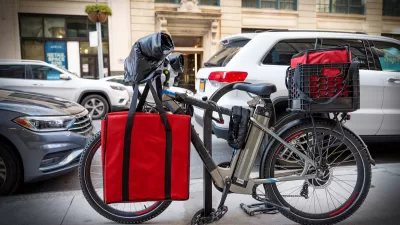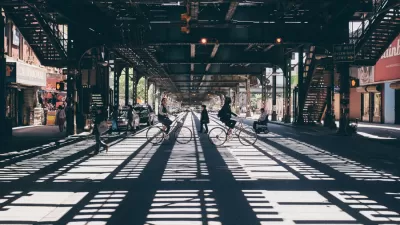As a growing number of devices fall outside of traditional vehicle classes, policymakers must decide how to classify and regulate high-speed e-bikes.

As e-bike manufacturers build increasingly fast and powerful "hyperbikes"—a term coined by Dutch builder VanMoof to describe its V model bike—policymakers must grapple with how to define and regulate the devices. As David Zipper writes,
Motorcycles and mopeds are often subject to an array of laws and restrictions that e-bikes aren’t, such as license plate mandates, helmet requirements, and special driver’s licenses. Such distinctions break down for the new class of high-speed e-bikes. After all, any two-wheeled vehicles traveling at 40 mph likely create comparable risk to the rider as well as other street users.
The e-bike market, which had been growing pre-pandemic, exploded during the last two years as people sought alternatives to public transit.
Regulations, meanwhile, have largely not kept up with the proliferation of new devices that blur the line between bicycles and the higher-powered class of mopeds and motorcycles. Federal rules in the U.S. classify e-bikes as having under 750 watts of power and top speed of 20 miles per hour, according to Zipper, but leave it up to states to regulate registration and insurance requirements.
For now, devices like the 700-watt, 37-mph VanMoof V largely fall outside of existing state and federal statutes. Advocates want to see clearer regulation, expressing concerns that leaving so many vehicles out of designated classes could lead to backlash and blanket bans on e-bikes, cargo bikes, and other forms of new mobility that, despite their usefulness, "don’t fit cleanly into the bike/car dichotomy," writes Zipper.
FULL STORY: As E-Bikes Speed Up, a Policy Dilemma Looms

Alabama: Trump Terminates Settlements for Black Communities Harmed By Raw Sewage
Trump deemed the landmark civil rights agreement “illegal DEI and environmental justice policy.”

Planetizen Federal Action Tracker
A weekly monitor of how Trump’s orders and actions are impacting planners and planning in America.

How Atlanta Built 7,000 Housing Units in 3 Years
The city’s comprehensive, neighborhood-focused housing strategy focuses on identifying properties and land that can be repurposed for housing and encouraging development in underserved neighborhoods.

In Both Crashes and Crime, Public Transportation is Far Safer than Driving
Contrary to popular assumptions, public transportation has far lower crash and crime rates than automobile travel. For safer communities, improve and encourage transit travel.

Report: Zoning Reforms Should Complement Nashville’s Ambitious Transit Plan
Without reform, restrictive zoning codes will limit the impact of the city’s planned transit expansion and could exclude some of the residents who depend on transit the most.

Judge Orders Release of Frozen IRA, IIJA Funding
The decision is a victory for environmental groups who charged that freezing funds for critical infrastructure and disaster response programs caused “real and irreparable harm” to communities.
Urban Design for Planners 1: Software Tools
This six-course series explores essential urban design concepts using open source software and equips planners with the tools they need to participate fully in the urban design process.
Planning for Universal Design
Learn the tools for implementing Universal Design in planning regulations.
Jessamine County Fiscal Court
Caltrans
Institute for Housing and Urban Development Studies (IHS)
City of Grandview
Harvard GSD Executive Education
Toledo-Lucas County Plan Commissions
Salt Lake City
NYU Wagner Graduate School of Public Service





























